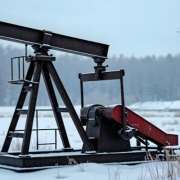Lessons from Shtokman
While the world was having a beauty sleep, an earth-moving event sent ripples through the Barents Sea – and made the infantile dreams of the classical energy monopolist in Europe (trust me – they are still an abundant species but they have learned to don the market gloves) a little less sweaty. But it was a dream built on sand.
Just imagine that for years the European gas world had known that Russia had a gas problem but they always said to themselves – don’t worry, Shtokman is going to solve that. At the same time, European players advanced that Europe would never match the prices Asians pay for their Natural Gas.
What’s wrong in all this? Right! How can one say that he considers natural gas supplies from Shtokman a viable option for Europe (I am talking about pipeline supplies) and at the same time refute LNG at 14 USD/MMBtu?
Let’s take a look at Shtokman. About 600 km from the shore in the Barents Sea, the field itself is at a spot where the water is about 600 meters deep. That’s not too bad you will say, as the world has dealt with worse. There are deep sea developments that are farther from the coast and 600 meters is hardly getting an offshore driller out of his armchair.
But the others have not been in the Barents Sea. What’s the Barents Sea then? Well, it freezes over in winter for a start. No big deal. We can deal with that. It’s also very rough weather (I am talking about really, really bad weather – not like in the comparatively balmy North Sea). OK, can deal with that too.
Now comes the slammer. Icebergs as big as small countries float over it every year. OK, we make it mobile so we can move away and apply subsea well finishings so the iceberg won’t matter. Not so quick, some of the icebergs are really big monsters. They reach down to the seafloor. That means the subsea finishing needs to be buried deep in the seafloor. That’s OK too but now the raw natural gas needs to be transported to the shore.
And here it gets hairy as the whole subsea pipeline needs to be buried in a very deep trench on the seafloor. I have had engineers telling me that it needs to be as deep as 40 meters (can that be real?) under the sea floor. If a typical building floor is 5 meters all over thickness, that’s as deep as an 8-story building is high. That’s a really deep and long (remember the 600 km) subsea trench. And all that just to be sure that Icebergs will not scrape your pipeline off the seafloor. I am simplifying things here but you get the essence?
Now, you want to be sure that once you have buried such a long and deeply laid pipeline it never breaks down in its lifetime (which is 20 years at the very minimum but very probably longer). Maintenance in case something is going wrong is going to be a real head-scratcher. That means exotic materials and coatings and exotic procedures. Not really a receipt for a low-cost operation.
OK, you have spent yourself out of this world and you are – yes you are right – still in the middle of nowhere. Northern Karelia is not exactly Central Europe and there is no system in place that you could piggyback on. So it’s building a brand new pipeline from Murmansk to St. Petersburg where you can tie into the existing system (which needs upgrading to accommodate the volumes). Or you go for a very large LNG plant. Not really among the cheaper ticket items.
What do I want to convey with all that? I have intentionally avoided numbers as they are always debatable and besides, I am not an upstream man. But this gas can impossibly be cheap as it will cost an arm and a leg to get it to market.
But this “not cheap gas” was the excuse of many European executives that they did not have to worry about Russian gas supply as Shtokman would fill the shortfall. That must be over now since Gazprom had announced that it would delay Shtokman indefinitely. It maybe coincides nicely with oversupply on the European market so no one would notice.
In reality, Shtokman was never a prospect for gas supply to Europe. Those who believed so have at the same time said that Japanese prices for LNG were impossible in Europe because (exactly) of all that Russian gas and that anyway, we have a different situation here in Europe.
But that’s wrong. Natural Gas is Natural Gas, no matter where it comes from. Shtokman would probably be classified as a conventional gas field but that distinction is only applicable to the properties inside the gas field itself (I am guessing here). So while the field might appear conventional to a geologist it most certainly is not for an upstream developer. Location can make an otherwise perfectly conventional field very unconventional.
Look at those ultra-deep sea drillings. The fields themselves are maybe producing conventional oil but the field development itself is so exotic, there is just a handful of firms able to venture there. Same for Shtokman. How many companies can develop gas fields under such challenging circumstances? Not many.
That makes Shtokman gas unconventional gas. How does it compare to other unconventional gas fields then? You compare the cost for lifting one MMBtu of it to the flow rate, cost of stimulation, and the gas in place figure plus add in the transport tariff if you happen to be in Australia, the Barents Sea, or the Moon and then you got it. It’s a simple calculation that every one of us can make on a paper towel.
OK, hold on. What do I convey with all this? Well, if already we come to accept that Shtokman is unconventional gas, we can also compare it to other unconventional gas developments that happen a little bit closer to us, in Ukraine for example. This would then be a conventional unconventional gas development as none of the crazy characteristics in the Barents Sea apply.
Let’s assume for the sake of argument that unconventional gas can be lifted for 8 USD/MMBtu (don’t you tell me that this is not possible after US shale) then this gas is a bargain compared to Shtokman gas which must cost well beyond 10 USD/MMBtu to produce and bring to market. But that would also mean that before Shtokman was developed, most unconventional gas fields in Russia and the rest of Eastern Europe would be developed as is cheaper to do so. And that has only one consequence – that Shtokman is stranded gas (just like a couple of other fields on earth) and that we should shelf it in the “Saturnian moon methane lake” category. We know it’s there and it makes us nuts (in our wet dreams) but the cost of getting it here is just too high.
But that must have been clear at least since the US shale gas revolution broke and that was not exactly yesterday.
Let’s see it from another angle – much of the Russian gas (I am talking about the Siberian legacy fields) would be stranded if no pipeline system in place has been built without the constraints of modern Project Finance.
What lessons do I pull from Shtokman then?
First – don’t be fooled by the terms conventional or unconventional. If a gas resource is inaccessible it might seem perfectly conventional but still is stranded gas to you.
Second – don’t count on the upward market to swallow any foley. What goes up, eventually goes down so be wise as to how much something is worth.
Third – do not overrate potential. Rate, what is there? That’s a hard one for upstream men as we always have stary eyes when we see potential reserve figures but this gas is in the ground and that’s not where you need it. It’s the burner tips that count. Besides, what’s potential anyhow?
Fourth – don’t go for the stars if what you need is much closer to you.


















Leave a Reply
Want to join the discussion?Feel free to contribute!